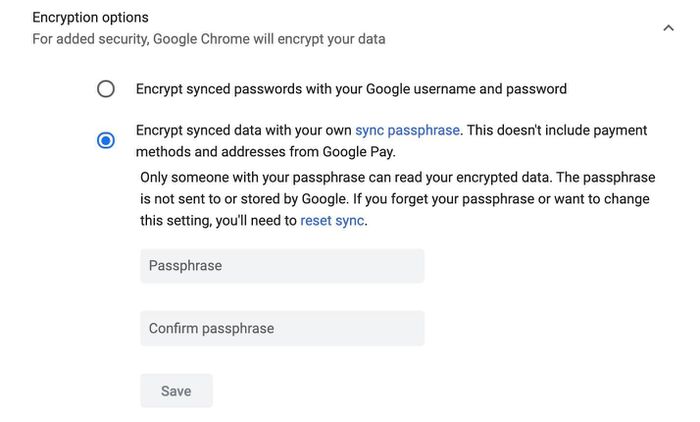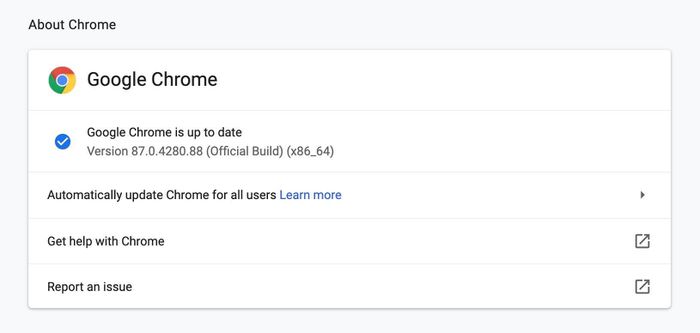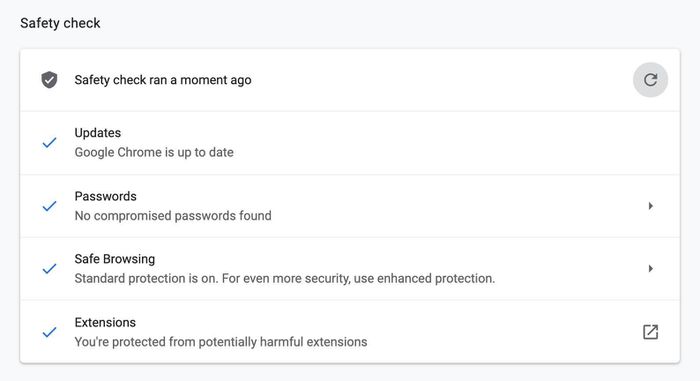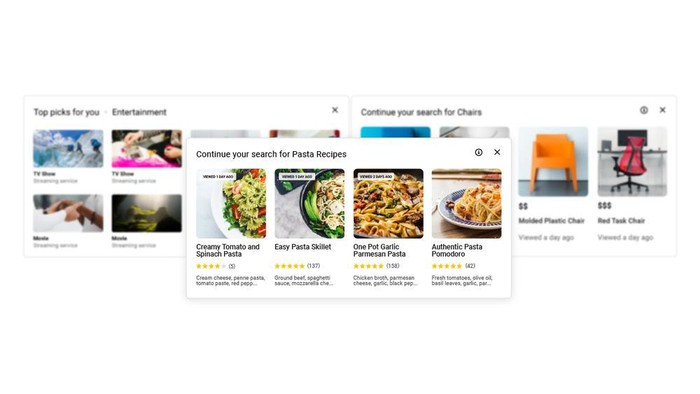Top 5 ways to avoid information disclosure when using Google Chrome
Fast page loading speed, rich extension inventory, good security . are one of the advantages of Google Chrome, one of the most popular browsers today.
1. Use passphrase synchronization
When logging into your Google account on Chrome browser, all your information including data, passwords, search history, bookmarks (favorite websites) . will be automatically synchronized on all devices. This means that users will have a more seamless user experience, without having to remember many complicated information.
However, if an account was compromised, anyone would be able to access these data. Luckily, you can use passphrase synchronization to prevent that from happening.
Basically, this is a kind of secondary password, once activated, it will start encrypting data stored on Google's servers and decrypt them after syncing with a device. concentration.
Since only you know your passphrase, no one will be able to access your data even if your account information is leaked.
To enable passphrase sync, type in the search bar chrome: // settings and press Enter (or return). Then, users just need to find the Sync and Google services (Google services and sync) - Encryption options (encryption options) - Sync passphrase and enter the corresponding password.

2. Update Google Chrome
To minimize the possible risks, you should make yourself a habit of updating software regularly, specifically here is the Chrome browser.
First, click the three-dot icon in the upper right corner and select Settings - About Chrome, wait a moment for the update to complete. Finally, users just need to press Relaunch to restart the browser.

3. Use advanced protection
When you mistakenly visit a malicious website, Google Chrome will automatically display a warning. However, this feature is only set up to protect users at a basic level, if you want to switch to advanced mode, go to Settings (settings) - Privacy and Security (privacy and protection security) - Security - Enhanced protection (advanced security).

4. Use content blockers
The Safe Browsing feature built into the Chrome browser can prevent ad windows from pop-up. However, that is not enough, which is why you should install content blockers like uBlock Origin, Adblock Plus or AdGuard AdBlocker.
Basically, the extensions use an existing list to block trackers and malicious websites. In addition, they also help speed up page loading by blocking resource-intensive snippets and ads.
5. Use the Safety check feature
To use it, go to the Settings section of the Chrome browser and click the Check now button at Safety check.
This tool will automatically check for security related issues, for example, password leakage issues . If there is any problem, the browser will immediately display a color warning. red, now users just need to follow the instructions to fix it.

You should read it
- Did you know Google Chrome has 4 versions?
- Instructions for syncing Chrome data on multiple devices
- How to sync data on Google Chrome?
- 10 utilities on Chrome you should not ignore
- Google Chrome extensions are required to restrict access to user data
- Google put a hand on the tool bar on Chrome
- Google released Google Chrome 26
- Google Chrome is now 23% faster, have you tried it?
May be interested
- Google released Google Chrome 26
 this morning (march 27), google officially launched google chrome version 26, with the full code name google chrome 26.0.1410.43 for windows, mac and linux operating systems.
this morning (march 27), google officially launched google chrome version 26, with the full code name google chrome 26.0.1410.43 for windows, mac and linux operating systems. - 7 Best Chrome Extensions for Quick Information Gathering
 this is where the following chrome extensions come in handy! they are companions that make it easy to collect, organize, and review all that information.
this is where the following chrome extensions come in handy! they are companions that make it easy to collect, organize, and review all that information. - Now it is possible to hack Windows with Google Chrome
 these days, information about security vulnerabilities appears everywhere with dizzying frequency. now, a new vulnerability related to chrome browser appears, allowing hackers to steal login information on chrome.
these days, information about security vulnerabilities appears everywhere with dizzying frequency. now, a new vulnerability related to chrome browser appears, allowing hackers to steal login information on chrome. - Google 'tightens' the installation of the extension on Chrome browser
 extensions (extensions) power up the browser, but to avoid computer infections, google now only allows users to install extensions from the chrome web store online store.
extensions (extensions) power up the browser, but to avoid computer infections, google now only allows users to install extensions from the chrome web store online store. - These are all the data about you that the websites you visit collect
 no matter which browser you open, for whatever purpose you have started to leave your traces. the websites you visit will track those traces, determine who you are and what your usage habits are through information such as geographic location, the links you click on, you use. computer desk or phone ...
no matter which browser you open, for whatever purpose you have started to leave your traces. the websites you visit will track those traces, determine who you are and what your usage habits are through information such as geographic location, the links you click on, you use. computer desk or phone ... - Put Google as the homepage on Google Chrome
 google is now a popular search site worldwide. and you can set google as your homepage on google chrome to access it immediately when surfing the web.
google is now a popular search site worldwide. and you can set google as your homepage on google chrome to access it immediately when surfing the web. - Warning: Google Chrome is experiencing serious security errors, patch updates right away
 recently, the department of information security (ministry of information and communications) issued a warning to vietnamese users about a serious security error (cve-2019-13720) currently exists on chrome browser.
recently, the department of information security (ministry of information and communications) issued a warning to vietnamese users about a serious security error (cve-2019-13720) currently exists on chrome browser. - How to control camera access on Chrome to protect personal information
 camera or microphone are two of the many tools that bad guys often use to collect personal information of users. therefore, you should know how to control camera access on chrome to avoid leakage of sensitive information.
camera or microphone are two of the many tools that bad guys often use to collect personal information of users. therefore, you should know how to control camera access on chrome to avoid leakage of sensitive information. - What is Google FLoC? How to block FLoC on Google Chrome
 what is google floc? how to block floc on google chrome below will help you better understand floc and gain more experience to protect personal information more safely while surfing the web.
what is google floc? how to block floc on google chrome below will help you better understand floc and gain more experience to protect personal information more safely while surfing the web. - Better Download Manager in Chrome with Downloadr
 when you click on a file download link in google chrome, the download progress bar will be displayed just below the browser interface. it displays information about the download process including the remaining time, speed, .. and you can hide it manually. in general, this progress bar is quite cumbersome and overwhelms a bit of the display space of the browser.
when you click on a file download link in google chrome, the download progress bar will be displayed just below the browser interface. it displays information about the download process including the remaining time, speed, .. and you can hide it manually. in general, this progress bar is quite cumbersome and overwhelms a bit of the display space of the browser.










 Why does the .crdownload file keep popping up every time you download something from Chrome?
Why does the .crdownload file keep popping up every time you download something from Chrome? Brave browser is enough to beat Chrome
Brave browser is enough to beat Chrome How to remove widgets visible on the Edge toolbar
How to remove widgets visible on the Edge toolbar Useful shortcuts on web browsers
Useful shortcuts on web browsers Google launched Chrome 87: performance increased sharply
Google launched Chrome 87: performance increased sharply 7 tips to speed up Tor browser
7 tips to speed up Tor browser